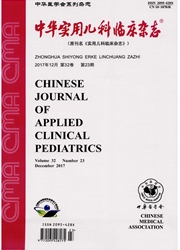

 中文摘要:
中文摘要:
目的探讨端粒酶重建皮肤成纤维细胞生物学行为的改变,尤其是细胞迁移能力的变化及相关机制。方法小儿包皮成纤维细胞分离培养,Lipofectamine介导将人端粒酶反转录酶(hTERT)真核表达质粒pGRN145转染培养的成纤维细胞,经潮霉素B筛选得到阳性克隆,扩增培养阳性克隆获取稳定表达hTERT的端粒酶重建成纤维细胞。TRAPEZE Telomerase Detection Kit检测细胞端粒酶活性。免疫组织化学染色法检测细胞波形蛋白和胶原表达以鉴定细胞类型。Boyden小室实验检测细胞迁移能力。RT-PCR和Western blot方法检测迁移相关分子趋化因子受体CXCR4的表达。结果pGRN145导入使细胞端粒酶得以重建,细胞寿命延长到160代以上,并稳定表达Ⅰ型胶原和波形蛋白。同时,在CXCL12刺激下,端粒酶重建皮肤成纤维细胞迁移能力明显增强。CXCR4在RNA水平和蛋白水平均表达增高。结论端粒酶重建皮肤成纤维细胞CXCR4表达上调,导致细胞迁移能力增强,可望在细胞治疗中更好的发挥作用。
 英文摘要:
英文摘要:
Objective To explore the biocharacteristics of the telomerase-reconstituted fibroblasts,especially the variation of cell migration and the related mechanism behind it.Methods Plasmid containing human telomerase reverse transcriptase(hTERT) gene was transfected through lipofectamine into the human fibroblasts cultured in vitro;positive clones were selected by hygromycin B and resulted in telo-merase reconstituted fibroblasts.Telomerase activity was detected by TRAPEZE Telomerase Detection Kit.The expressions...
 同期刊论文项目
同期刊论文项目
 同项目期刊论文
同项目期刊论文
 In vitro effects of hypoxia-inducible factor 1alpha on the biological characteristics of the SiHa ut
In vitro effects of hypoxia-inducible factor 1alpha on the biological characteristics of the SiHa ut Signaling pathway involved in hypoxia-inducible factor-1alpha regulation in hypoxic-ischemic cortica
Signaling pathway involved in hypoxia-inducible factor-1alpha regulation in hypoxic-ischemic cortica Proapoptotic role of human growth and transformation-dependent protein in the developing rat brain a
Proapoptotic role of human growth and transformation-dependent protein in the developing rat brain a Effects of DNAzymes Targeting Aurora kinase A on the Growth of Human Prostate Cancer.Cancer gene the
Effects of DNAzymes Targeting Aurora kinase A on the Growth of Human Prostate Cancer.Cancer gene the 期刊信息
期刊信息
